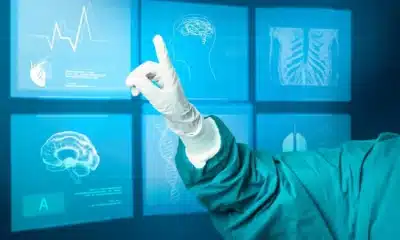RPM is making a significant contribution to increasing the reach of health care. Rural and underserved populations have limited access to continuity of medical care because of distance, transportation, or a lack of practitioners. This is where RPM comes in, forcing the two worlds to meet since healthcare monitoring is brought directly to the home of the patient. By adding connected devices to telehealth platforms, providers have a chance to reach out to populations that did not have good access to care.
It is a democratization of healthcare, which no longer means that the place in which one resides impacts the quality of healthcare one receives. It also lessens the load on patients who can otherwise have to take leave and travel miles to attend general check-ups. Removing these obstacles, the Remote Patient Monitoring Program is allowing patients to treat their conditions on the fly, at home.
Improving Chronic Disease Management
Certain chronic illnesses, like diabetes, hypertension, and heart failure, are some of the greatest contributors to medical expenditures in the world. These ailments demand a permanent watch and changes in the course of therapy. RPM gives the facility to control such diseases better. With real-time measures, providers can implement preventative efforts to stop complexities before they happen, lessening the number of hospitalizations and emergency visits.
Not only does this enhance the health conditions, but it also offloads the health facilities that are overwhelmed by increased demands. To patients, it instills a greater sense of responsibility because they are now able to see how their lifestyle may be directly related to their health. Minor lifestyle changes like balancing nutrients in the diet, like reducing intake of sodium or adhering to prescribed drugs, are easy when the patients can achieve quick results through their monitoring devices.
Cost Savings and System Efficiency
The expenditures on health care are steadily increasing, and currently, one of the most urgent tasks is to develop methods of delivering high-quality care at a sustainable price. RPM supports such an initiative as it directs attention towards prevention and early intervention. Hospitalizations, emergency care, and unneeded diagnostic evaluations are costly, and many of them could be prevented when the conditions are treated proactively. To healthcare organizations, RPM is a cost-effective way of delivering high-quality care. In the long term, RPM could ultimately ease the workforce shortage as it would minimize in-person follow-ups by stable patients, with providers devoting more time to patients with complex needs.
Integrating Data for Smarter Decisions
The huge volumes of data produced by RPM devices give a chance to make evidence-based decisions intelligently. Combined with electronic health records, this data can be exploited to spot patterns, anticipate risks, and assist with population health management. To take one example, a provider may be able to use trends across hundreds of patients to identify which interventions are most effective. Such an integration allows healthcare to become more responsive and strategic instead of a one-size-fits-all healthcare treatment.
As AI is added to this information, however, clinicians will soon be able to predict the outcomes of patients more accurately and provide possible interventions much earlier, possibly even saving lives and money.
Challenges and Ethical Considerations
If there is promise of RPM, there are also challenges of privacy, equity, and access to technology. Ensuring sensitive health information is not breached is of utmost importance, given that breaches would corrupt the trust in such systems. Moreover, providers need to make sure that RPM does not foster widening the disparity gap, subjecting those who are already tech-savvy or otherwise financially able to have access to devices.
Ethical implementation will imply the ability to strike a healthy balance between innovation and inclusiveness of patients so that no patient is left behind in the process. Patient and caregiver training programs, patient subsidies to lower-income groups, and robust regulatory systems will play very important roles in ensuring that RPM reaches its potential level equitably.
A Connected Future for Healthcare
The incorporation of RPM into the healthcare industry is an indication of the future where there is a fusion of technology and human care. This will give healthcare providers continuous oversight of the patient, allow more informed decisions by the provider, and allow the healthcare system to operate more efficiently. As devices are easier to use and analytics are more sophisticated, RPM will probably become a near-standard element of care. It is reasonable to expect that within the next one or two decades, RPM will no longer be limited to chronic care only, but will be applied to the presence of preventive health and rehabilitation levels, as well as post-surgical care. By unlocking deficits in access, cost, and quality, remote patient monitoring is creating the foundation for a more connected and equitable healthcare ecosystem– where proactive and personalized care will no longer be an exception but the rule.

 News2 months ago
News2 months ago
 Health2 years ago
Health2 years ago
 Technology2 years ago
Technology2 years ago
 Celebrity1 year ago
Celebrity1 year ago
















